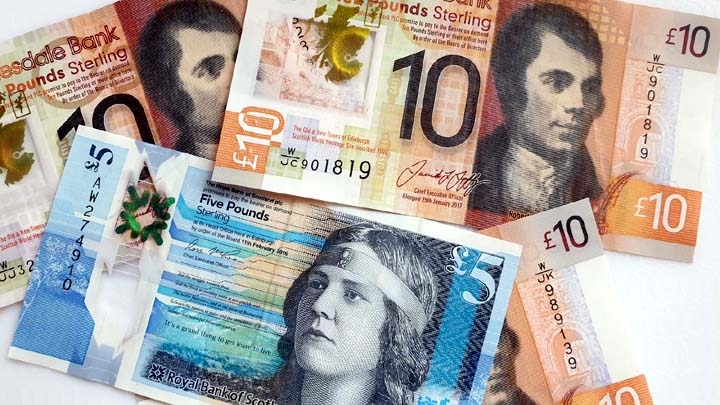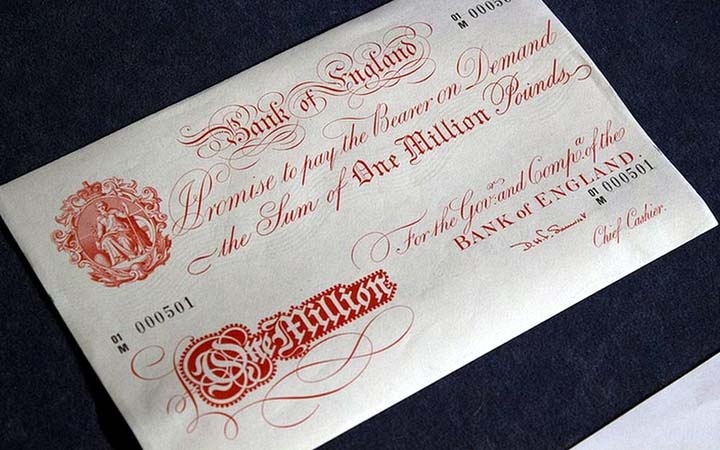
 |
|
|||||||
| Image of the Day Images that will blow your mind - every day. [Blog] [RSS] [XML] |
 |
|
|
Thread Tools | Rate Thread | Display Modes |
|
|
#1 | |||
|
The future is unwritten
Join Date: Oct 2002
Posts: 71,105
|
Dec 21st, 2019 : Sounds Legit
Scottish money is different. Printed by three private banks and used not only in Scotland but all over the
UK even though it’s not legal tender. What?   Quote:
 Quote:
...which they keep, but they don’t have the money anymore. Probably should ask Cynthia Payne, Vivien Ella Walden, and Guinness, if they’ve seen any of it.   Quote:
link
__________________
The descent of man ~ Nixon, Friedman, Reagan, Trump. |
|||
|
|

|
|
|
#2 |
|
I love it when a plan comes together.
Join Date: Oct 2009
Posts: 9,793
|
I'd like to find a banknote from the Bank of Brigadoon for my collection; but, I hear they're hard to come by.
|
|
|

|
|
|
#3 |
|
Junior Master Dwellar
Join Date: Dec 2009
Location: Buckinghamshire UK
Posts: 4,059
|
I've spent plenty BofE notes in Scotland but I rarely see a Scottish note down here.
Things might have changed, but years ago I was on my way back from a temporary work placement in NE Scotland and had to stop for fuel at a motorway service area* south of the border. I only had Scottish notes so asked if they were acceptable before purchase and was told they were allowed to take them but not give them in change. What the state of play is these days, I don't know, but have a feeling that you still might have some difficulty in getting them accepted in England. Plastic, of course, solves these problems.  *Never a good idea as fuel is always ruinously expensive at these places, but needs must...
__________________

|
|
|

|
|
|
#4 |
|
Encroaching on your decrees
Join Date: Feb 2004
Location: An island within the south-west coast of Scotland
Posts: 7,016
|
I've had plenty of shops in England refuse my Scottish banknotes. I take my custom elsewhere on principle even if I then use plastic to pay.
Sent by magick
__________________
Living it up on the edge ... of civilisation, within the southwest coast of 
|
|
|

|
|
|
#5 |
|
Radical Centrist
Join Date: Jan 2001
Location: Cottage of Prussia
Posts: 31,423
|
You will have to pocket that attitude after Scottish independence and Scotland rejoining the EU
 They did away with the Franc, which had been around since the 1300s... I don't think they will accept any of this! |
|
|

|
|
|
#6 | |
|
I love it when a plan comes together.
Join Date: Oct 2009
Posts: 9,793
|
Quote:
Here, even with a single currency, some businesses won't accept denominations over $50 (especially from OCONUS travelers)); so, they won't get burned that way. $100 bills are the most widely counterfeited around the world (in CONUS it's the $20 bill). |
|
|
|

|
|
|
#7 |
|
The future is unwritten
Join Date: Oct 2002
Posts: 71,105
|
I read North Korea bought one of the rare printing presses from Switzerland that the US uses.
There's $900 Billion in US hundred dollar bills with half or more out of the country. So it's common to see them and prime target for counterfeiters.
__________________
The descent of man ~ Nixon, Friedman, Reagan, Trump. |
|
|

|
 |
| Currently Active Users Viewing This Thread: 1 (0 members and 1 guests) | |
|
|